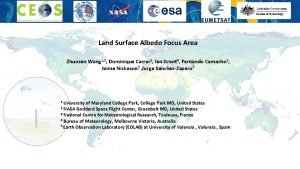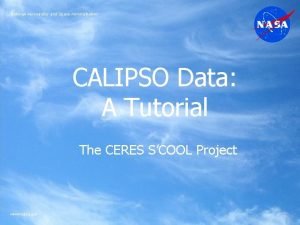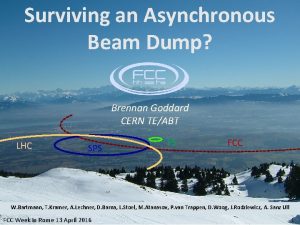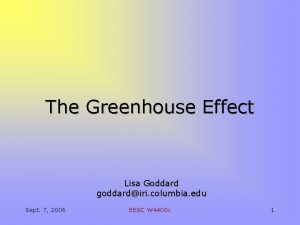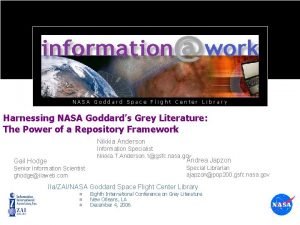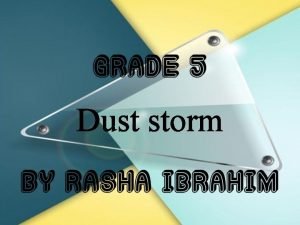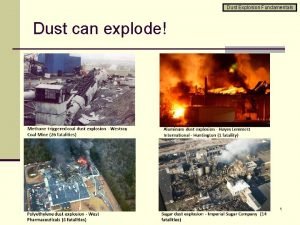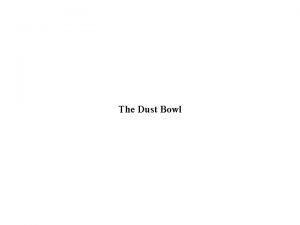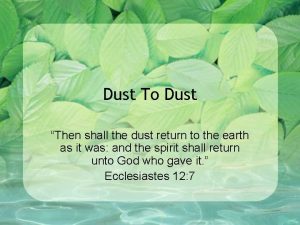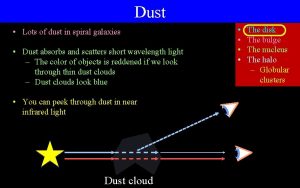Dust Modeling at the NASA Goddard Institute for









- Slides: 9

Dust Modeling at the NASA Goddard Institute for Space Studies Ron Miller, Susanne Bauer, Reha Cakmur, Jan Perlwitz, Peng Xian

How Will the Dust Aerosol Load Change in the 21 st Century? • The present-day dust load varies by over a factor of 4 within recent dust models, (10 -40 Tg; Zender et al. Eos 2004). • For comparison, ocean optical thickness for all aerosols varies over a factor of 2 among retrievals (Myhre et al. J. Atmos. Sci. 2004). Surface Concentration at Barbados Chiapello, Moulin, Prospero, J. Geophys. Res. 2005 • Decadal variations in Sahel dust export are at least twofold. • Over the twentieth century, the dust load has decreased due to changes in circulation and an increase in sulfate aerosols (which increase dust solubility when taken up on the dust particle surface: Bauer and Koch, J. Geophys. Res. 2005). This corresponds to 0. 16 Wm-2 of radiative forcing since the preindustrial.

Why Don’t Models Agree on the Present-Day Dust Aerosol Load? • What regions produce dust? • Preferred Sources (Prospero et al. , Rev. Geophys. 2002): Arid regions where sediments accumulate by fluvial erosion from the surrounding highlands (e. g. dry lake and river beds). • This has led to different implementations in the models. Cakmur et al. , J. Geophys. Res. , 2006

Calculating Emission In a Dust Model S(x) is susceptability to wind erosion, which depends upon location: largest where there is little vegetation and lots of loose soil particles. Tune C to bring the global, annual emission that is in optimal agreement with the observations of aerosol optical thickness, surface concentration, and deposition (Inverse approach). Define ‘agreement’ using a root-mean-square difference between the models and observations.

Observations of the Dust Cycle • • Aerosol Optical Thickness (AOT): AERONET, AVHRR, TOMS. Surface concentration from Univ. of Miami. Deposition dataset compiled by Ginoux et al. (JGR, 2001), Tegen et al. (JGR, 2002). Size distribution calculated from AERONET (Dubovik et al. JGR 2002), compiled by Ginoux et al. (JGR, 2001). Cakmur et al. , J. Geophys. Res. , 2006

Optimal Magnitude of the Dust Aerosol Cycle • • Global dust aerosol load in optimal agreement with a worldwide array of observations is between 24 and 37 Tg. This is smaller than the current range among models, although still corresponds to a 50% uncertainty in forcing. The main remaining uncertainty is the source prescription. While the environments emitting dust have been identified, how to represent these environments in a model remains to be settled. (Note also that sources due to land use are not explicitly included. ) Clay is mainly constrained by AOT; satellite retrievals have the advantage of near global coverage. However, the clay contribution is obscured by other aerosol species. Surface concentration (and the AERONET size distribution) provide the main constraint upon silt emission and its load. This indicates the value of routine in situ measurements of surface concentration and deposition.

Future Work • • Apply optimization technique to AEROCOM models to calculate how the optimal load varies with the model. Take advantage of latest retrievals (e. g. MODIS, MISR) that are now long enough to have reliable climatology. Calculate whether emission is the largest uncertainty in the dust aerosol cycle (vis-à-vis wet removal, e. g. ) How much does the dust load vary over the twentieth century? How do dust variations interact with other aerosol species (through heterogeneous chemisty and uptake)? Simulate all aerosols (including sulfates, nitrates, carbonaceous) in the pre-industrial and onward to the present-day). More Information http: //pubs. giss. nasa. gov/authors/rmiller. html Cakmur, R. V. , R. L. Miller, Ja. Perlwitz, I. V. Geogdzhayev, P. Ginoux, D. Koch, K. E. Kohfeld, I. Tegen, and C. S. Zender 2006. Constraining the global dust emission and load by minimizing the difference between the model and observations. J. Geophys. Res. , 111, D 06207, doi: 10. 1029/2005 JD 005791. Miller, R. L. , R. V. Cakmur, Ja. Perlwitz, I. V. Geogdzhayev, P. Ginoux, K. E. Kohfeld, D. Koch, C. Prigent, R. Ruedy, G. A. Schmidt, and I. Tegen 2006. Mineral dust aerosols in the NASA Goddard Institute for Space Sciences Model. E atmospheric general circulation model. J. Geophys. Res. , 111, D 06208, doi: 10. 1029/2005 JD 005796. Zender, C. S. , R. L. Miller, and I. Tegen 2004. Quantifying mineral dust mass budgets: Terminology, constraints, and current estimates. Eos Trans. Amer. Geophys. Union, 85, no. 48, 509, 512.

Dust Aerosols in the Model. E AGCM • • Emission based upon subgrid wind speed distribution (Cakmur et al. 2004, JGR). Vegetation mask: European Remote Sensing (ERS) microwave scatterometer (sensitive to surface roughness) (Prigent et al. 2005, JGR). GISS model. E AGCM (Schmidt et al. 2004, JGR). A. 4° x 5°, 20 layer (10 in troposphere with 0. 1 mb top). B. No dust radiative forcing (diagnostic only). C. Forced by observed SST 1997 -2001: 5 years mean. Preferred source regions based upon: A. Topographic lows (Ginoux et al. 2001, JGR). B. Paleolakes (Tegen et al. 2002, JGR). C. River deposition (Zender and Newman, 2003, JGR). D. As identified by satellite retrievals (Grini et al, 2005, JGR)

Total Model Error (All Data) Optimal value annual emission depends upon assumed source: Ginoux ~ 1600 Tg (1200 -2100) Tegen ~ 2600 Tg (1500 -4100) Zender 1 ~ 2300 Tg (1000 -4600) Zender 2 ~ 2300 Tg (1300 -3800) Cakmur et al. , J. Geophys. Res. , 2006

